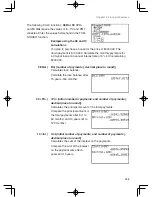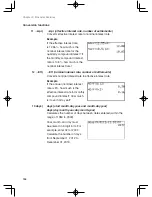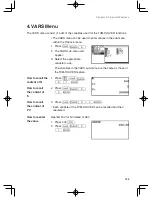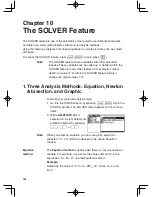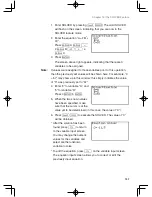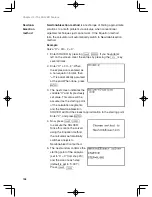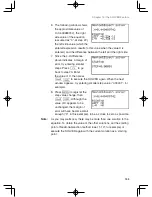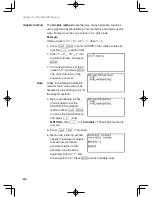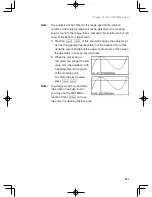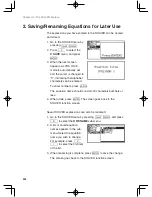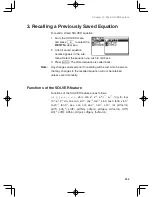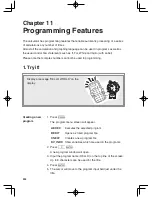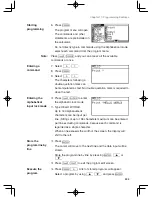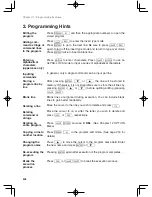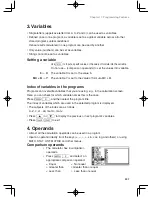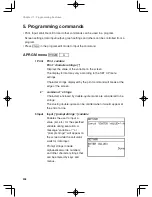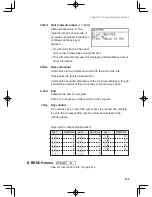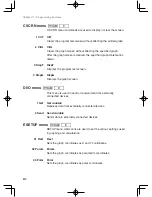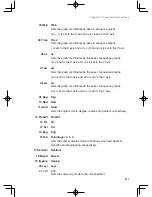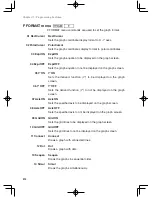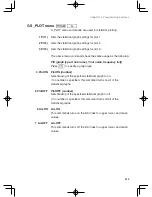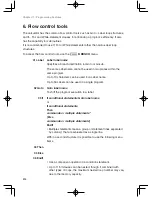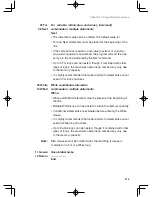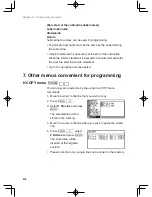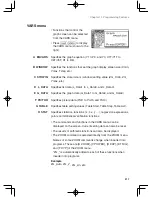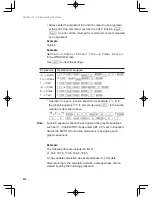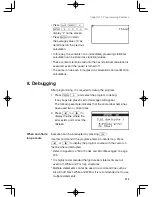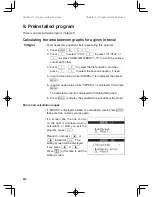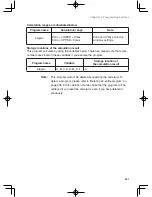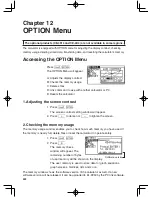
207
Chapter 11: Programming Features
3. Variables
• Single letters (uppercase letter from A to Z and
θ
) can be used as variables.
• Defined once in one program, a variable is set as a global variable across all other
stored programs unless redefined.
Hence results calculated in one program can be used by another.
• Only value (numbers) can be set as variables.
• Strings cannot be set as variables.
Setting a variable
Use
R
to input a specific value or the value of formula into the variable.
Do not use = (comparison operands) to set the values into variable.
5
⇒
X The variable X is set to the value 5.
MX + B
⇒
Y The variable Y is set to the value of formula MX
+
B.
Index of variables in the programs
Programs can overwrite variables that you are using, e.g., in the calculation screen.
Here, you can check for which variable names this is the case.
Press
P
D
, and then select the program title.
The index of variables which are used in the selected program is displayed.
• The subjects of the index are as follows ;
A~Z,
θ
, L1~L6, mat A~ mat J
• Press
{
or
}
to display the previous or next program's variables.
• Press
@
q
to exit.
4. Operands
• Almost all the calculation operands can be used in a program.
• Input an operand directly from the keys (
+
,
–
,
×
,
÷
, sin, cos, log and others) or using
MATH, STAT, LIST, MATRIX and other menus.
Comparison operands
• The calculator has 6 comparison
operands.
• Press
M
F
and select an
appropriate comparison operand.
= Equal
≠
Not equal
> Greater than
≥
Greater than or equal
< Less than
≤
Less than or equal
Содержание el-9950
Страница 1: ......
Страница 11: ...10 Chapter 1 Getting Started To open the cover When in use When not in use Using the Hard Cover ...
Страница 266: ......

